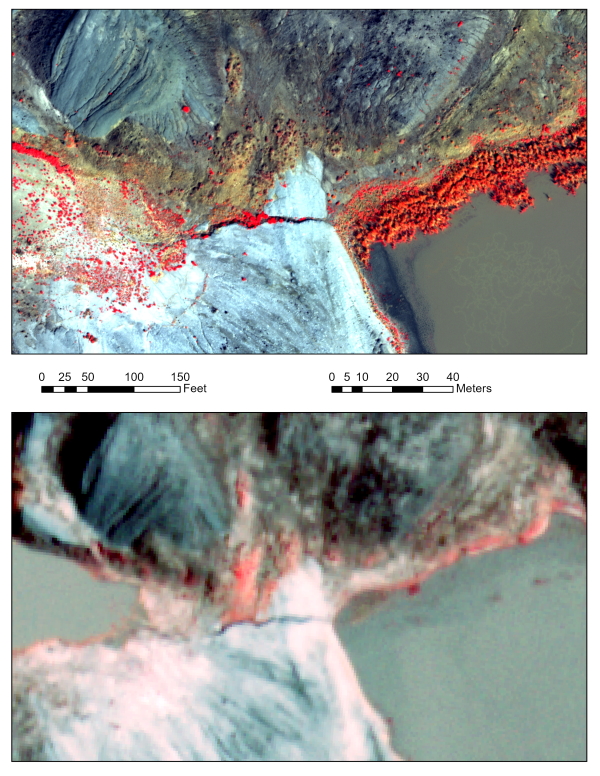Civil Air Patrol Collects Data for South Dakota Mines Researchers

South Dakota Wing, Civil Air Patrol (CAP), has completed a major drone photography data collection project for researchers at the South Dakota Mines Center for Sustainable Solutions funded by the U.S. Bureau of Land Management.
The CAP team collected and processed over 786,000 multispectral images covering 8,125 acres (13 square miles) along Middle Creek, a tributary of the Belle Fourche River. The Center’s scientists are assessing the imagery to help study the influence of past bentonite mining, which has significantly reduced vegetation, and to understand the best potential approaches for restoring the landscape.
“CAP’s drone capabilities are better than what we have readily available for research,” said Lisa Kunza, Ph.D., director of South Dakota Mines Center for Sustainable Solutions. “The multispectral imagery is crucial to our understanding of the study area. The CAP personnel were knowledgeable and professional helping aid in the project completion, prompt, and fun to work with.”
To capture data, South Dakota Wing deployed a WingtraOne Gen II fixed-wing drone equipped
with a multispectral camera. This Swiss-made UAS took off vertically and mapped pre-set
routes, requiring 100 flights over 64.5 hours across 20 days in a 4-month period.
Two or more CAP crew members assisted daily, with six UAS pilots, including one from
Wisconsin, completing the project despite frequent delays due to wind, rain, and clouds.
“The other strength of working with CAP is the shared opportunity for education and outreach in the Black Hills,” said Patrick Kozak, research scientist for the Center for Sustainable Solutions. Kozak oversees the bentonite reclamation project including the drone data collection “The Center for Sustainable Solutions gets to show the positive work that CAP brings to the stakeholders on the science of our current projects. In addition, it allows for joint outreach between CAP and the Center for Sustainable Solutions, demonstrating the benefits of CAP and STEM to K-12 education regionally and nationally.”
CAP is the civilian auxiliary of the Air Force. In addition to directly supporting non-combatant Air Force missions, CAP has responsibilities that are part of the USAF’s support to civil authorities. The Mines project was conducted in accordance with CAP’s Memorandum of Understanding with the State of South Dakota. The research is funded under the U.S. Bureau of Land Management grant.
“South Dakota Wing has always been in the forefront of the small uncrewed aerial system program in Civil Air Patrol,” said Col. Mike Beason, CAP’s project officer for the Mines mission and a UAS instructor at CAP’s National Emergency Services Academy (NESA). “We usually think of our drone program as supporting damage assessment or search and rescue missions, but we are pleased to demonstrate the flexibility of our technology in this environmental research.”
CAP and the university’s Center for Sustainable Solutions plan another round of drone-based multispectral photo data collection in 2025 to continue documenting the Middle Creek area over time, Beason said.